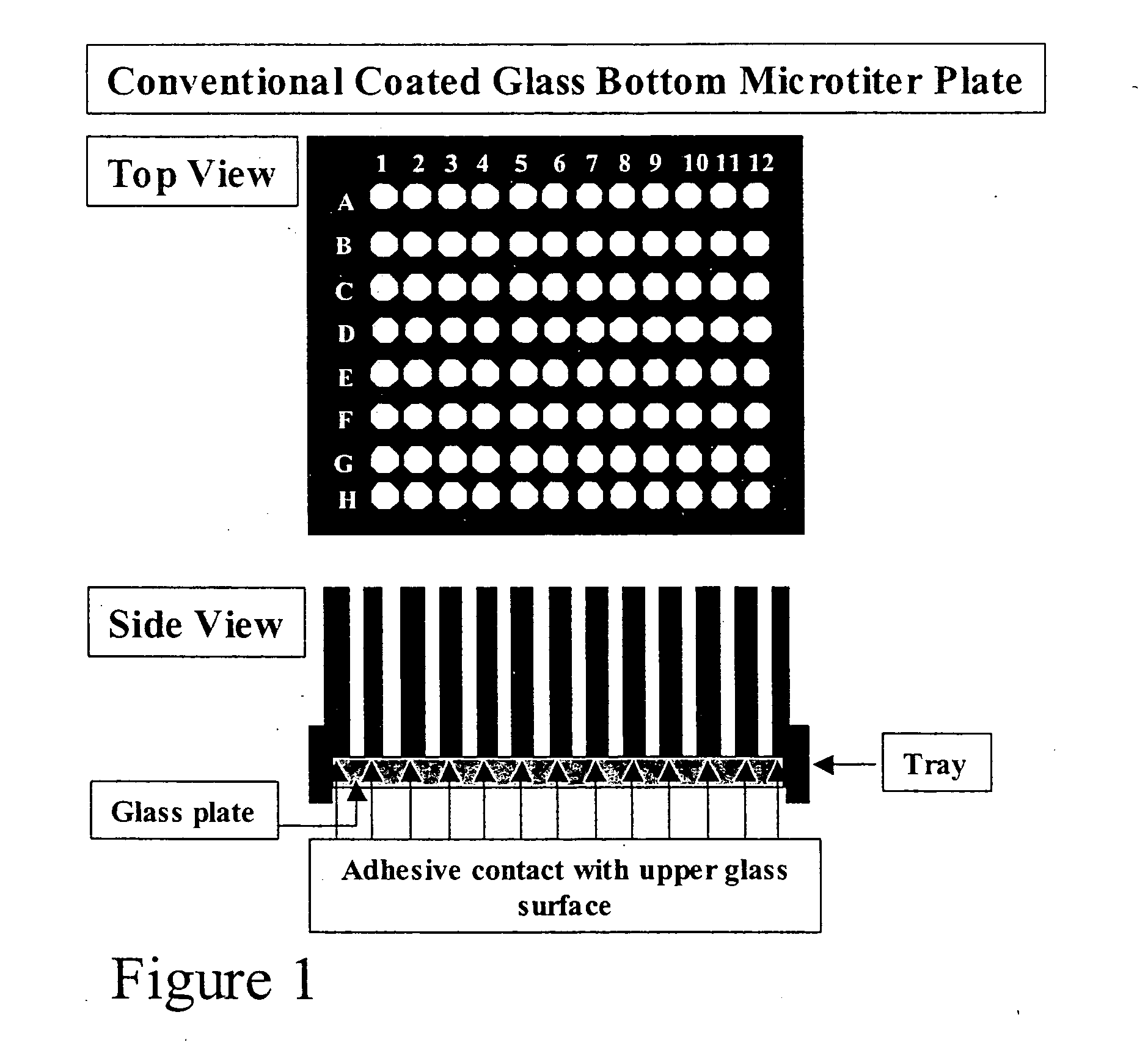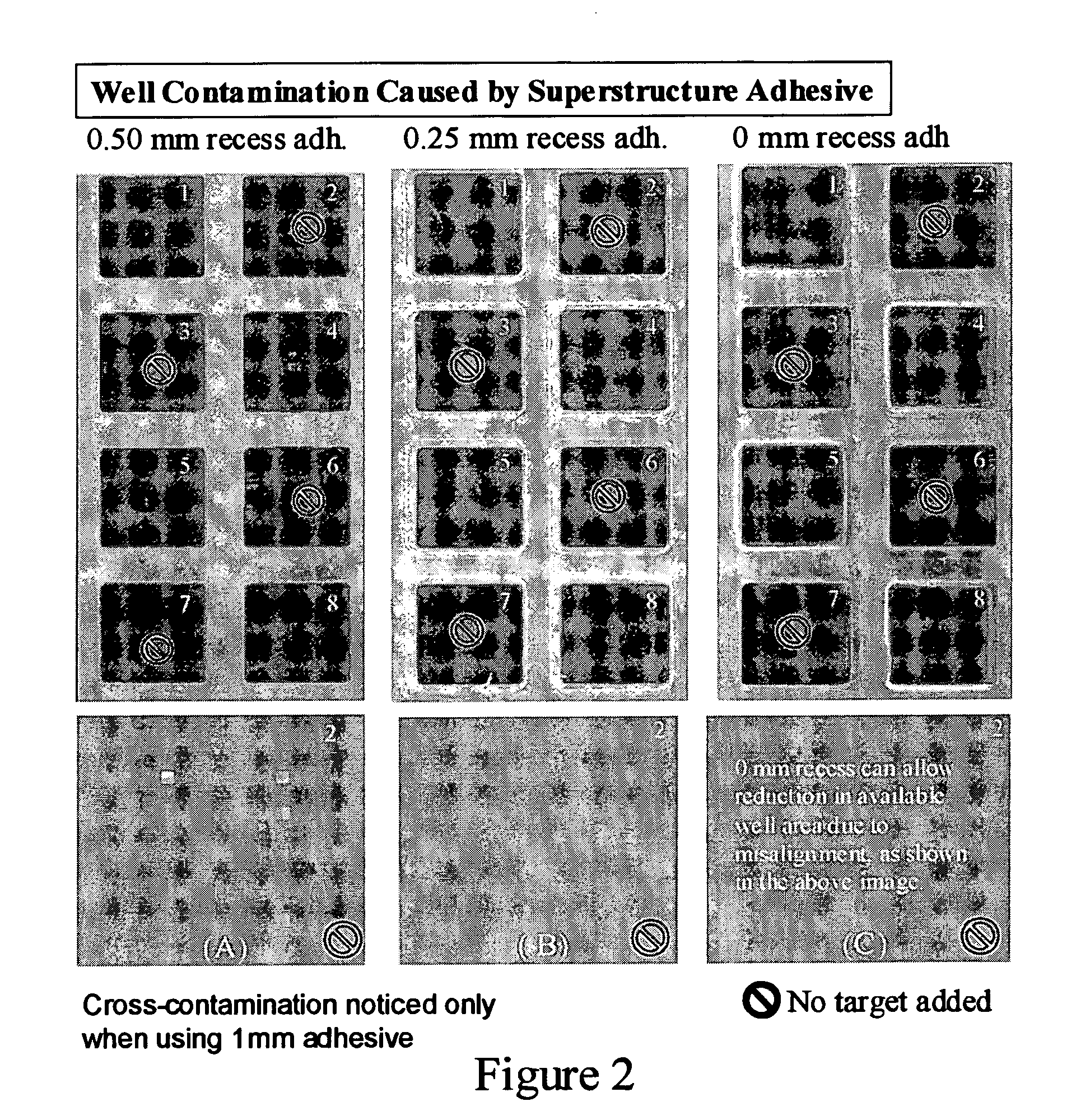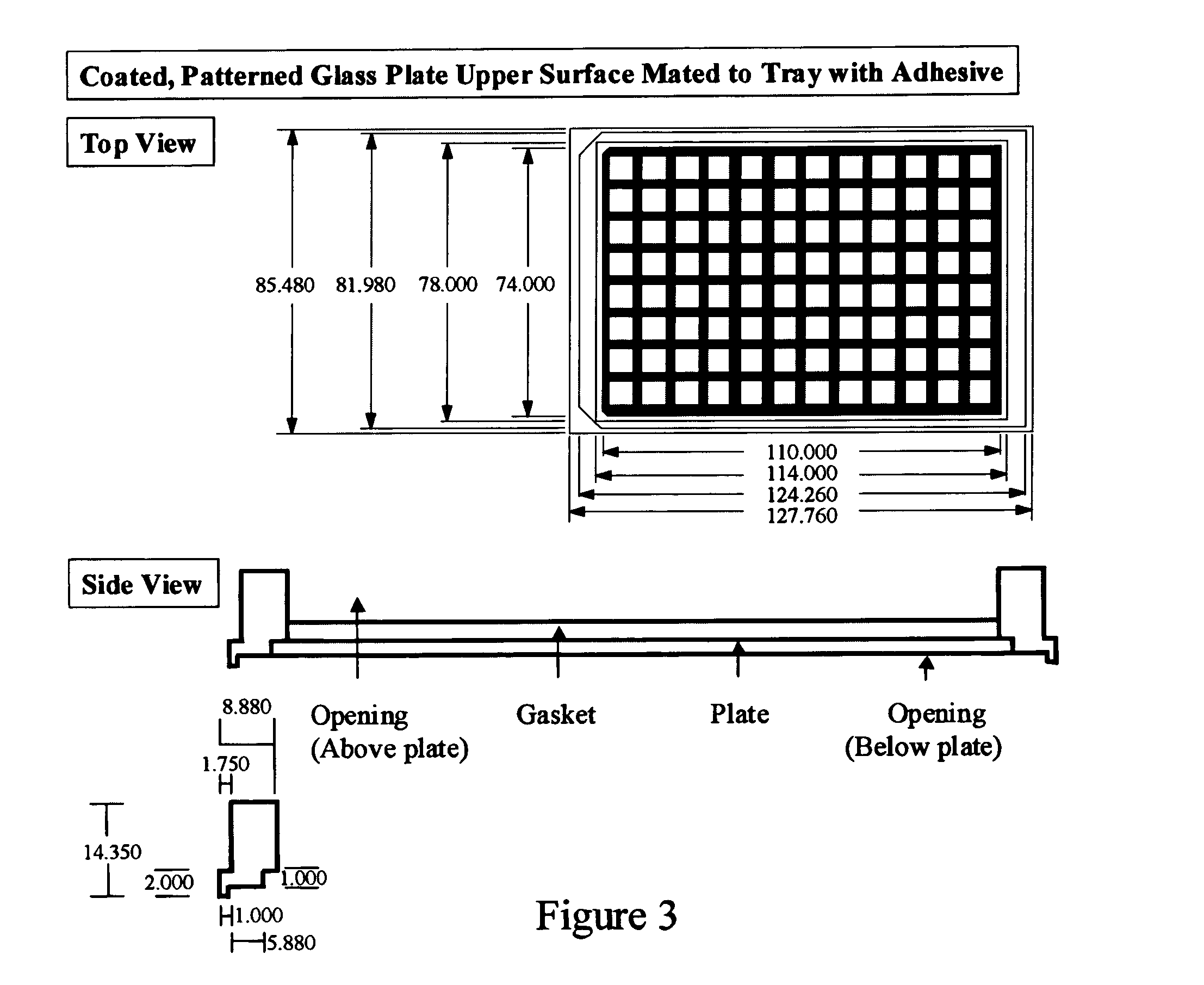Apparatus with microtiter plate format for multiplexed arraying
a technology of multiplexed arraying and microtiter plate, which is applied in the field of apparatus with microtiter plate format for multiplexed arraying, can solve the problems of inability to successfully interface conventional microtiter plate designs with conventional microtiter plate fabrication, and the inability to achieve contact pin or inkjet printing of microarrays, so as to improve the effect of multiplexed microarraying
- Summary
- Abstract
- Description
- Claims
- Application Information
AI Technical Summary
Benefits of technology
Problems solved by technology
Method used
Image
Examples
example 1
Reduction of Well Contamination
[0046]FIG. 2 depicts the elimination of well contamination by reducing the amount of the adhesive on the flexible superstructure around the wells on epoxy silanized patterned glass substrates. A complex hybridization experiment is conducted using a 10×10 array of 50 mer (rat) probes, and a mixture of CDNA Cy3 labeled kidney and Cy5 labeled liver targets are added to wells 1, 4, 5, 8. As demonstrated, full adhesive around the wells (FIG. 2c) leads to reduction in printable well area and well contamination from the adhesive, while reducing the adhesive too much around the wells (FIG. 2a) leads to intra-well cross contamination.
PUM
| Property | Measurement | Unit |
|---|---|---|
| thickness | aaaaa | aaaaa |
| thickness | aaaaa | aaaaa |
| thickness | aaaaa | aaaaa |
Abstract
Description
Claims
Application Information
 Login to View More
Login to View More - R&D
- Intellectual Property
- Life Sciences
- Materials
- Tech Scout
- Unparalleled Data Quality
- Higher Quality Content
- 60% Fewer Hallucinations
Browse by: Latest US Patents, China's latest patents, Technical Efficacy Thesaurus, Application Domain, Technology Topic, Popular Technical Reports.
© 2025 PatSnap. All rights reserved.Legal|Privacy policy|Modern Slavery Act Transparency Statement|Sitemap|About US| Contact US: help@patsnap.com



